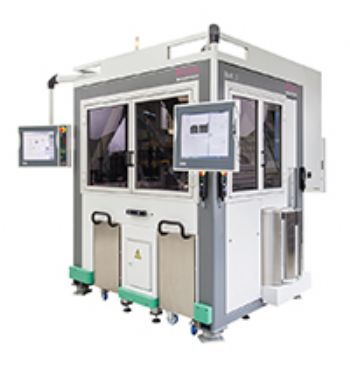
The manufacturing facility of the Austrian carbide company Ceratizit is located in the picturesque mountain town of Reutte, near the German border. From here, the company supplies semi-finished carbide blanks and finished products, which are broken down into ‘pre-forms’, carbide rods and tool inserts.
Pre-forms are made-to-order carbide parts that are pre-formed and partly ground by Ceratizit, then finished by the customer. The carbide rods are generally semi-finished products that become drilling or milling tools, while the tool inserts are finished products used for milling, turning and drilling applications.
The portfolio of tool inserts covers around 2,700 standard items; Ceratizit also makes special inserts to order.
Until recently, the company had been using an old automated measuring system to confirm the quality of its inserts, but this was running at the limit of its capacity.
At Control (the quality assurance trade fair), Daniel Scheiber — Ceratizit’s quality manager for the insert-pressing production line — saw Blum-Novotest’s BMK measuring and automation cell (
www.blum-novotest.com) — a modular inspection system that can be configured to perform additional functions such as sorting, labelling and packaging of parts.
Peter Mösle, head of sales for measuring and testing technology at Blum-Novotest, said: “While we already had the BMK 3 successfully in use with a number of customers, Ceratizit presented two new challenges: it required a high throughput rate and high measurement precision.
There aren’t any flat surfaces on the tool inserts, and the cutting edges are curved. This makes them very difficult to measure using conventional methods — especially to the precision required by Ceratizit — and we quickly came to the conclusion that we would have to use a high-resolution optical measuring system.”
Ceratizit’s Mr Scheiber says: “Previously, we had used camera systems only to detect positions or geometry, not to measure micron-level tolerance values. The required unit throughput time of 3.5sec meant that instead of using a conventional robot for parts handling, we would need a very fast ‘delta robot’ of the type usually used in pick-and-place applications such as packaging. We prepared a very detailed definition of the functions that the automated cell had to perform and the measuring accuracies that it had to achieve.”
To begin with, Ceratizit and Blum Novotest considered using two robots — a delta robot for handling the inserts and a portal-type unit for handling the boxes in which the quality-assured inserts are packed. However, it soon became
apparent that this approach would be too costly and too complex, so a gripper-changing system that allowed a delta robot to undertake insert manipulation and box movement was devised.
The robot removes an insert from a transport pallet and places it on a high-speed rotary indexer that presents it to a camera for measuring, after which the robot replaces it in a 10-insert box. Mr Scheiber says that the new cell is offering quantifiable advantages.
“Compared with our old system, the BMK cell measures 40% more inserts per hour — in half the space. Moreover, it practically runs itself; an operator just checks it occasionally and re-stocks it with empty packaging boxes.”